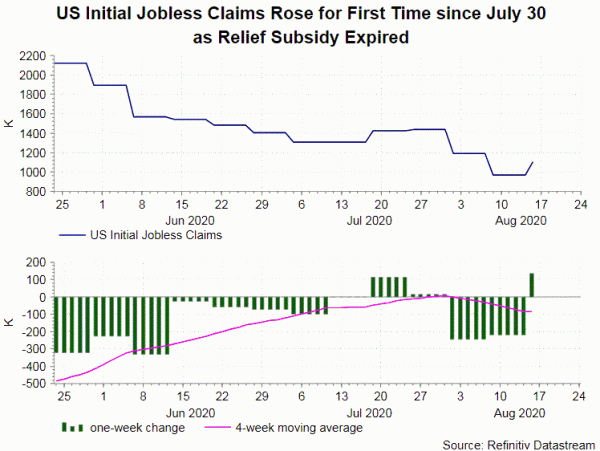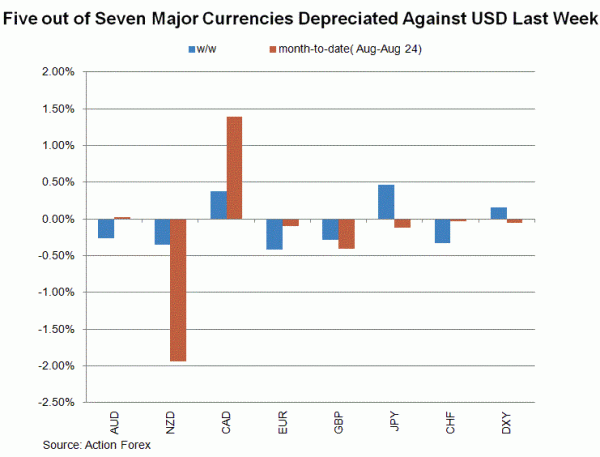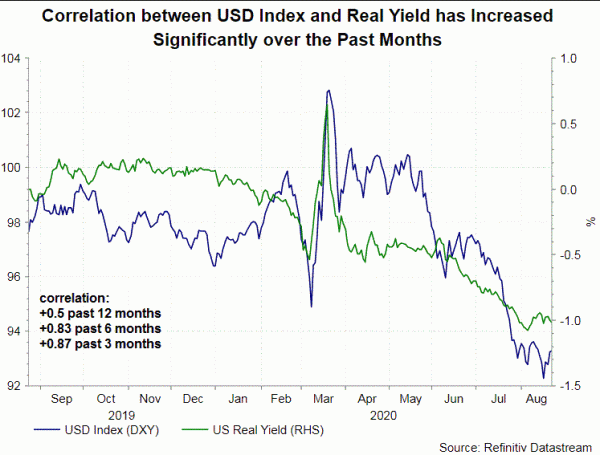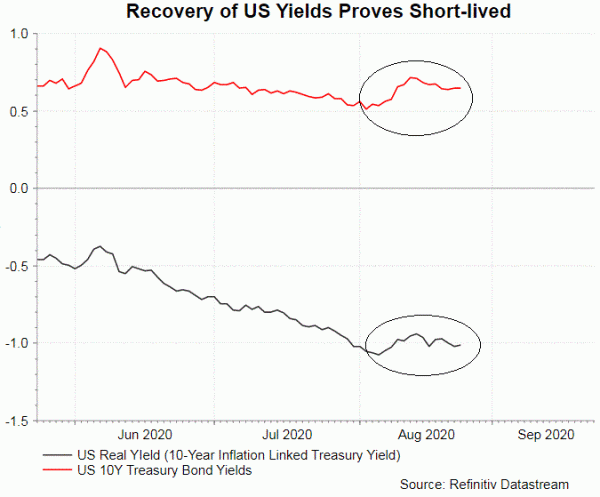We expect US dollar’s downtrend to resume downtrend in coming months after consolidation. Fiscal stalemate suggests that the Fed would shoulder more burdens in delivering stimulus. This should lead yields to decline further, supporting weakness in the greenback.
Stalled Hopes on Fiscal Stimulus
– advertisement –
Failure to strike a deal on a new fiscal stimulus package before the Congress recess from August 10 suggests that discussion of any relief plan will have to wait at least until September 8. Meanwhile, the House of Representatives is not due to reconvene for voting until September 14. As such, no new fiscal stimulus is expected in 2-3 weeks’ time.
The lack of follow-through after expiration of previous relief measures would be harmful to US economic outlook. For instance, Credit Suisse projected that failure to extend the US$600/week unemployment benefits is set to hit US disposable household income by as much as US$50B. President Donald Trump signed an executive order on August 8 to offer a US$300 weekly supplement, drawn from federal disaster funds, as a relief for the unemployed after the previous benefits of US$600/ week expired. However, it is up to the states’ decision over if they would participate in the program. As of August 20, fewer than a quarter of the states had been approved for the program, and only Arizona had put it into action. Meanwhile, participating states noted that it would take a few weeks before they could deliver the money to workers. Indeed, the impacts on the job market have quickly evidenced in the initial jobless claims which rose to 1,106K in the week ended August 10, compared with consensus of 925K and 971K in the prior week. Initial jobless claims had been falling since late July.
Economists have warned of the increasing probability of double-dip recession in the US and called for further fiscal stimulus. Indeed, this risk has already has some impacts on US yields. The recovery of longer-term US yields in earlier this month proved to be short-lived, while real yields have resumed the decline. Stalled hopes on the fiscal stimulus suggests that the central bank would have to shoulder more responsibility on growth boost.
Lead to More Fed Responsibility
The next FOMC meeting is just 3 weeks to go. Our base case remains that the Fed would announce the result of the Monetary Policy Review in September. We expect the Fed to formally move to average inflation targeting from point targeting (at 2% currently). Meanwhile, the Fed will also adopt an outcome-based forward guidance, pledging to maintain the current target range for the federal funds rate at least until one or more specified economic outcomes was achieved. Both measures would send a more dovish bias to the Fed’s monetary policy stance.
As noted in the July minutes, “a number of participants noted that providing greater clarity regarding the likely path of the target range for the federal funds rate would be appropriate at some point”. Compared to previous pledge that the forward guidance will have to be adjusted “at upcoming meetings”, some suggested that the Fed was not yet ready to announce a shift in the monetary policy in September. Indeed, this was a reason for USD’s recovery last week. Even if this might be true, it is only a matter of timing for the Fed to make significant changes to its policy framework which is prone to add more dovish bias to the policy outlook.
The July minutes also revealed that many members’ skepticism about Yield Curve Control (YCC). While “many” participants judged that they should remain an option, “most” noted that this “would likely provide only modest benefits in the current environment”. They were concerned about the “the possibility of an excessively rapid expansion of the balance sheet and difficulties in the design and communication of the conditions under which such a policy would be terminated”. As such, it is less unlikely for this tool to be implemented in the near-future. However, if the Congress’ fiscal stimulus remains unsatisfactory in reviving the economy, this, and other alternative tools, would be used by the Fed.
Ahead of the September meeting, the Jackson Hole symposium later this week (August 27-28) is closely watched. The symposium has been a channel for the Fed to communicate the monetary policy shift to the market. Hints of future policy stance and/or QE sizes would send yields and USD lower.



